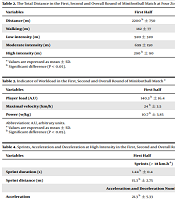Physical and Heart Rate Responses of Male Minifootball Players: A Case Study of an Elite Minifootball Match
Keywords:
Minifootball, Elite, Physical, Heart Rate, Global Positioning SystemAbstract
Objectives: The purpose of this research was to explore the physical parameters and the heart rate responses of elite minifootball players during an international match. Methods: Ten male elite players from two national teams (Tunisia vs. Switzerland) participated in this study (26.2 ± 1.9 years, 175 ± 7 cm, 79.2 ± 5.8 kg). Heart rate was recorded by polar team system all the time that players spent moving on the pitch (walking, jogging, and running). For physical parameters, data (i.e., indicator of workload, sprints, total distance, acceleration and deceleration) were gathered using wearable GPS. Results: Results showed that the minifootball match induced high intensity exercise (86% HRmax). Moreover, total distance and high-intensity running distance were significantly higher in favor of the first half than in the second half. Likewise, sprints, acceleration and deceleration at high intensity were significantly higher in the first half. Conclusions: Minifootball is a physically intense sport, necessitating high intensity. Thus, its physical demands should be taken into consideration by coaches when designing and implementing training sessions.
Downloads








